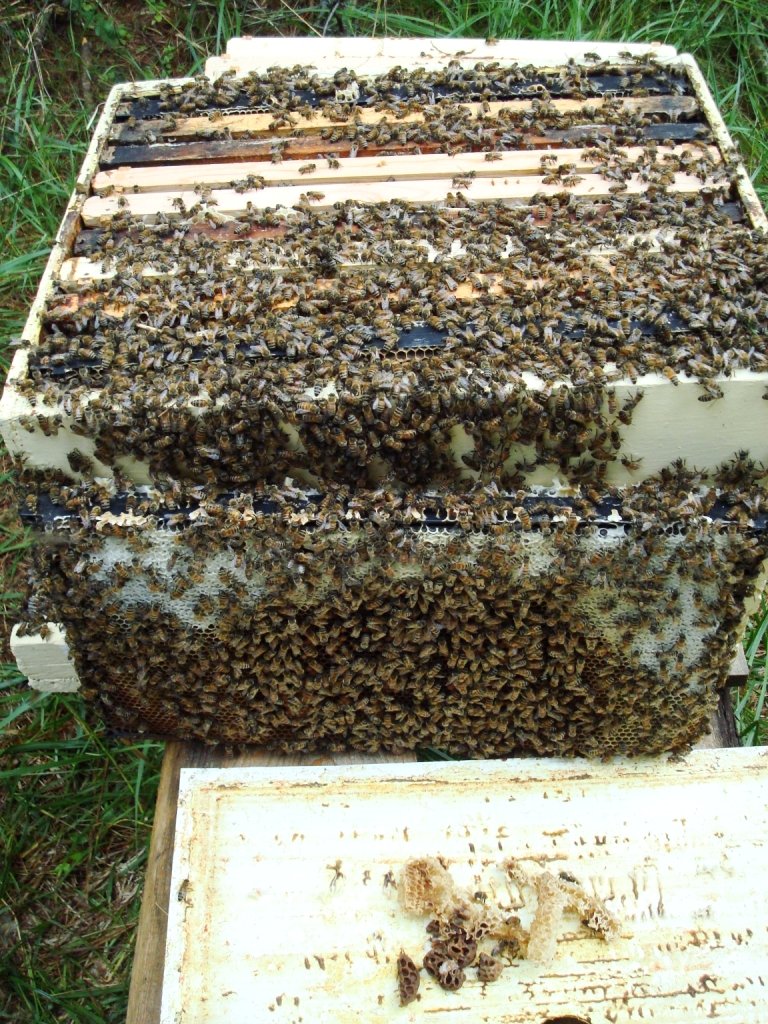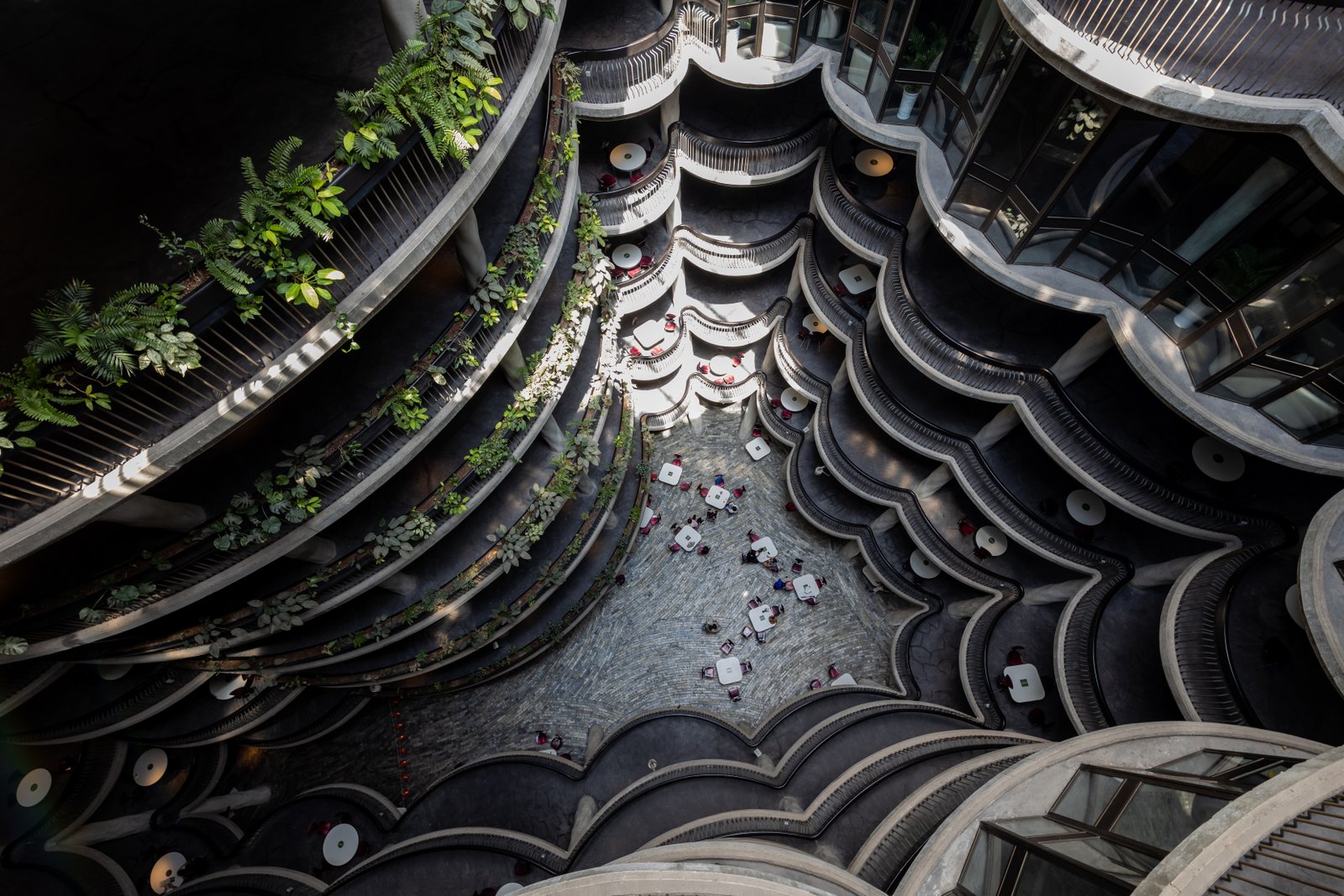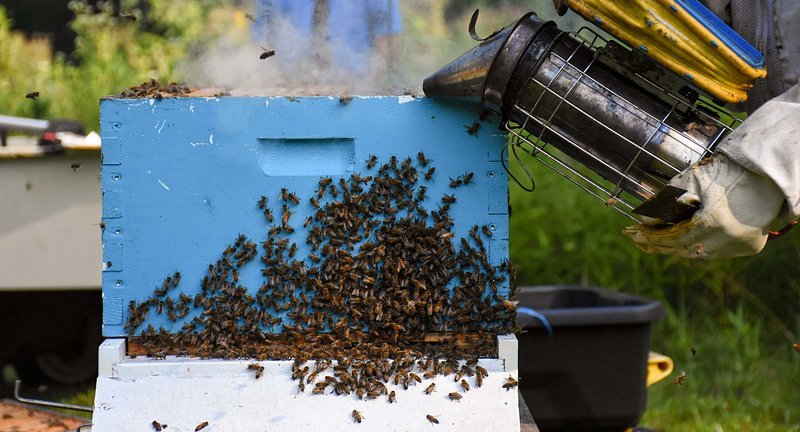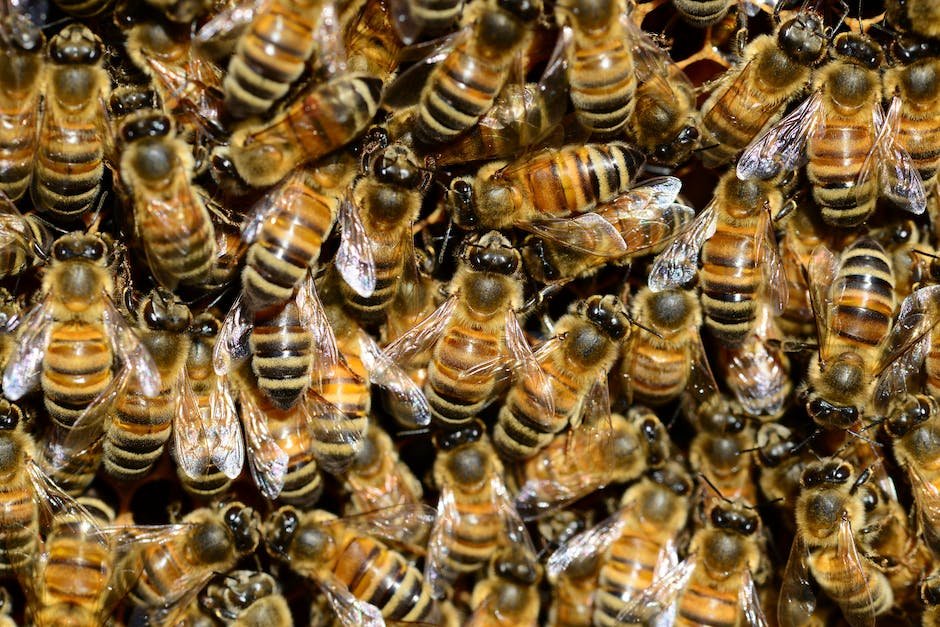Every morning, as the sun rises and paints the skies with a golden hue, a bustling metropolis comes to life, where nature’s most diligent workers embark on their quest for nectar and pollen. Welcome to the world of bees, where intricate communication systems and remarkable organization govern their daily lives. Within this remarkable realm, one crucial factor holds the key to their survival – hive positioning. While the location may seem insignificant to our human eyes, for bees, it is the orchestrator of their well-being. Unraveling the mysterious relationship between hive positioning and bee health is an endeavor that not only sheds light on these tiny creatures but also offers invaluable insights into saving the guardians of our ecosystem.
Table of Contents
- The significance of hive positioning for bee health
- Understanding the influence of hive location on colony productivity and longevity
- Factors to consider when selecting an ideal hive placement
- Guidelines for optimal hive positioning to promote bee health
- Improving bee health through strategic hive placement
- Q&A
- To Wrap It Up

The significance of hive positioning for bee health
The importance of hive positioning in maintaining optimal bee health
As beekeepers, we often focus on providing our buzzing friends with the best care possible. Among the many factors that contribute to the well-being of bees, hive positioning is a crucial consideration that should not be overlooked. Properly positioning hives not only ensures a thriving environment for the bees but also enhances their foraging capabilities and overall productivity.
One key aspect to consider when deciding where to position your hives is access to sunlight. Bees thrive in warm and sunny environments, as sunlight aids in colony development, disease prevention, and honey production. Aim for a location that receives ample sunlight throughout the day, avoiding excessive shade that can hinder their growth and vitality.
Another factor to keep in mind is the proximity to water sources. Just like any living creature, bees require a sufficient supply of clean water for hydration and maintaining hive humidity. Ensure that there are natural or artificial water sources, such as ponds or apiary water stations, located nearby. This way, bees won’t have to venture too far from the hive, reducing potential stress and energy expenditure.
Remember, beehive positioning is a fundamental consideration that can significantly impact the health and productivity of your bees. By providing them with sunlight, water accessibility, and considering other environmental factors, you are enabling your buzzing companions to thrive and flourish, enriching not only their lives but also the crucial pollination services they provide to our ecosystem.

Understanding the influence of hive location on colony productivity and longevity
When it comes to maintaining healthy and productive bee colonies, choosing the right location for the hive plays a crucial role. The influence of hive location on colony productivity and longevity cannot be understated. In fact, it can determine the success or failure of a beekeeping venture.
So, what factors should one consider when selecting the ideal hive location? Here are a few key considerations:
- Accessibility: Bees require access to nectar and pollen sources, so locating the hive near flowering plants ensures a steady food supply. Additionally, easy access for maintenance and inspections is vital for beekeepers to monitor the colony’s health.
- Sunlight Exposure: Bees thrive in warm and sunny environments, as it speeds up their metabolism and promotes colony growth. Thus, placing the hive in an area with ample sunlight ensures higher productivity.
- Wind and Shelter: While bees appreciate warmth, they can also be delicate creatures. Constructing windbreaks or placing the hive in a sheltered spot minimizes exposure to strong winds, reducing stress and preventing wind chill.
- Water Sources: Just like any living organism, bees need access to freshwater. Providing a nearby water source, such as a pond or birdbath, ensures the bees have enough hydration and prevents them from straying too far from the hive in search of water.
By carefully considering these factors and selecting an ideal location, beekeepers can significantly increase the productivity and longevity of their beloved bee colonies. Every decision made about hive placement directly affects the well-being of the bees, making this an important consideration in sustainable and successful beekeeping.

Factors to consider when selecting an ideal hive placement
When it comes to beekeeping, selecting the perfect hive placement is crucial for the health and productivity of your colony. So, before you decide on a location for your buzzing friends, here are some key factors to consider:
- Sunlight: Bees love basking in the warm rays of the sun. Choose a spot that receives ample sunlight throughout the day, as it helps maintain optimal hive temperature and boosts honey production.
- Shelter from the elements: Protection from wind, rain, and extreme weather conditions is vital to keep your bees comfortable and their hive secure. Look for an area that has natural barriers or consider placing the hive near a wall or under a sturdy roof.
- Foraging opportunities: Bees need a diverse range of flowers and plants to gather nectar and pollen. Ensure your hive is located near a variety of flowering vegetation, so your bees have easy access to their necessary food sources.
- Water source: Just like humans, bees need water too! Place your hive within a reasonable flying distance of a clean and reliable water source, such as a pond or a shallow birdbath. This will prevent your bees from wandering into neighbor’s swimming pools!
- Security and privacy: Be mindful of placing your hive away from busy areas or high foot traffic, as it can cause unnecessary disturbance or endanger your bees. A secluded yet accessible location will provide them with the privacy they need to thrive.
Remember, choosing the right hive placement is a balancing act that considers both the needs of the bees and the wellbeing of those around them. By taking these important factors into account, you’re one step closer to establishing a flourishing honey-producing paradise for your extraordinary little winged companions.

Guidelines for optimal hive positioning to promote bee health
Ensuring the well-being of our precious bees is crucial for maintaining a healthy ecosystem. In order to promote their health and productivity, it is important to consider the optimal positioning of beehives. Follow these guidelines to create an environment that supports the flourishing of our buzzing friends:
- Access to sunlight: Place the hives in an area that receives ample sunlight throughout the day. This provides warmth and helps regulate the temperature inside the hive, ensuring the bees stay comfortable and active.
- Shelter from strong winds: Shield the hives from excessive winds by positioning them behind a natural windbreak, such as a fence or dense vegetation. This helps maintain the hive’s stability and prevents heat loss during cooler weather.
- Diverse flora nearby: Aim to have a variety of flowering plants and trees surrounding the hives to provide bees with a diverse source of nectar and pollen. This supports their nutritional needs and encourages stronger colony growth.
By following these guidelines, beekeepers can create an ideal environment for their hives, maximizing the health and productivity of their bee colonies. Remember, the well-being of bees is essential for the pollination of plants, agriculture, and the overall biodiversity of our planet.
Improving bee health through strategic hive placement
Ensuring the health and well-being of bees is crucial for the survival of our ecosystem. One way to support bee populations is through strategic hive placement. By carefully selecting the location of bee hives, we can optimize their chances of thriving and contribute to the overall health of these vital pollinators.
Benefits of strategic hive placement:
- Promoting foraging: Placing hives near abundant nectar and pollen sources allows bees to have easy access to the food they need. This encourages active foraging and helps strengthen their colonies.
- Reducing exposure to pesticides: It is essential to avoid placing hives in areas where pesticides are regularly used. Bees are highly susceptible to these chemicals, which can have detrimental effects on their health and overall survival.
- Providing shelter: Hives should be positioned in a way that protects them from extreme weather conditions such as strong winds and direct sunlight. By offering a safe and comfortable environment, we can help bees thrive and maintain their health.
By strategically placing bee hives with these considerations in mind, we can contribute to the preservation of these vital pollinators and the countless ecosystems that rely on their pollination services.
Q&A
What is hive positioning and why is it important for bee health?
Hive positioning refers to the strategic placement of beehives in an environment. It is crucial for bee health because it can determine access to food sources, temperature regulation, and protection from predators, allowing bees to thrive in their surroundings.
How does hive positioning affect foraging patterns in bees?
Proper hive positioning can influence the availability of nectar and pollen resources for bees. By placing hives near abundant and diverse sources of flowers, foraging patterns can be optimized, resulting in healthier bees and increased honey production.
Can hive positioning impact the overall productivity of a beehive?
Absolutely! The right hive positioning can significantly impact hive productivity. By placing hives in areas with favorable weather conditions, appropriate sunlight exposure, and limited disturbances, bees are more likely to achieve their full potential in terms of honey production and brood development.
What are the potential risks of improper hive positioning?
Improper hive positioning can expose bees to various risks. If hives are placed in areas with limited floral resources or near pesticide-treated crops, bees may suffer from malnutrition or pesticide exposure, leading to weakened immune systems and colony decline.
How can hive positioning contribute to disease prevention?
A well-positioned hive can aid disease prevention in multiple ways. Distance between hives can limit the spread of contagious diseases, while proper ventilation and sunlight exposure can help control humidity and inhibit pathogen growth, reducing the risk of infection.
What are some key factors to consider when positioning beehives?
When positioning beehives, several factors should be considered. These include proximity to diverse forage sources, shielding hives from excessive winds and cold temperatures, providing proper sun orientation, and ensuring a water source nearby.
Can hive positioning influence bee behavior and communication?
Certainly! Hive positioning affects bee behavior and communication. Placing hives in favorable locations can promote orientation and waggle dance accuracy, improving effective communication among bees, enhancing the efficiency of foraging, and maximizing the potential of the entire colony.
How can beekeepers optimize hive positioning for better bee health?
Beekeepers can optimize hive positioning by carefully selecting suitable sites that guarantee a plentiful supply of diverse flowers, minimal exposure to pesticides, adequate sun exposure, natural windbreaks, and proper drainage. Regular monitoring and evaluation are necessary to adapt to changing environmental conditions and maintain optimal positions for hive health.
To Wrap It Up
As we bid adieu to the enchanting realm of hive positioning and its impact on the bustling society of bees, we are left marveling at the intricate dance nature conducts to ensure the well-being of these tiny golden warriors. While the role of hive positioning may have remained concealed in the shadows for centuries, its significance has finally been unveiled, casting a brilliant light on the health and prosperity of these fascinating creatures.
We have journeyed alongside the industrious bees, delving into the secrets of their intricate positioning system, witnessing the ingenious manner in which they harmonize with the rhythm of the natural world. Through their collective wisdom, the bees have crafted an intricate tapestry of communication, choreographed dances, and celestial navigation, all orchestrated to perfection for the survival and vitality of their beloved hive.
Like maestros of a symphony, the bees masterfully select their beehive’s location, assimilating a myriad of factors, from sunlight and temperature to accessibility and natural food sources. They summon the warmth of the sun’s rays to nourish their young ones, create a haven ensuring protection from the elements, and tap into nature’s bountiful resources to ripple through their colony, sustaining life and fostering productivity.
The delicately balanced temperature within the hive, a dance between warmth and ventilation, is a testament to the bees’ ingenuity. They utilize architectural prowess, building hive structures that effortlessly dissipate heat on scorching summer days or retain the warmth in cool winter months. This meticulous craftsmanship is fundamental to ensuring the health and vigor of the entire colony.
Yet, beyond these tangible elements, there exists an intangible essence – the guiding force of hive positioning. Swarming with purpose and cohesion, these wise insects eagerly acquaint themselves with the land, intimately knowing its contours, flora, and fauna. Their keen spatial awareness ensures a secure ecosystem, one that harmonizes with their surroundings and thrives in the symbiotic embrace of nature.
As we conclude our captivating exploration into the role of hive positioning in bee health, we are left astounded by the remarkable interconnectedness of the natural world. From the bustling foraging bees to the intricate complexities of their hive, the delicate weavings of this magnificent dance reverberate far beyond their diminutive domain.
Let us cherish the lessons from these marvels of nature, acknowledging the profound importance of hive positioning in nurturing the health, vitality, and prosperity of these tireless pollinators. May we stand as humble witnesses, our hearts attuned to the whispers of the bees, and lend our support in protecting their intricate dance across gardens, fields, and beyond.
As an affiliate, my content may feature links to products I personally use and recommend. By taking action, like subscribing or making a purchase, you’ll be supporting my work and fueling my taco cravings at the same time. Win-win, right?
Want to read more? Check out our Affiliate Disclosure page.